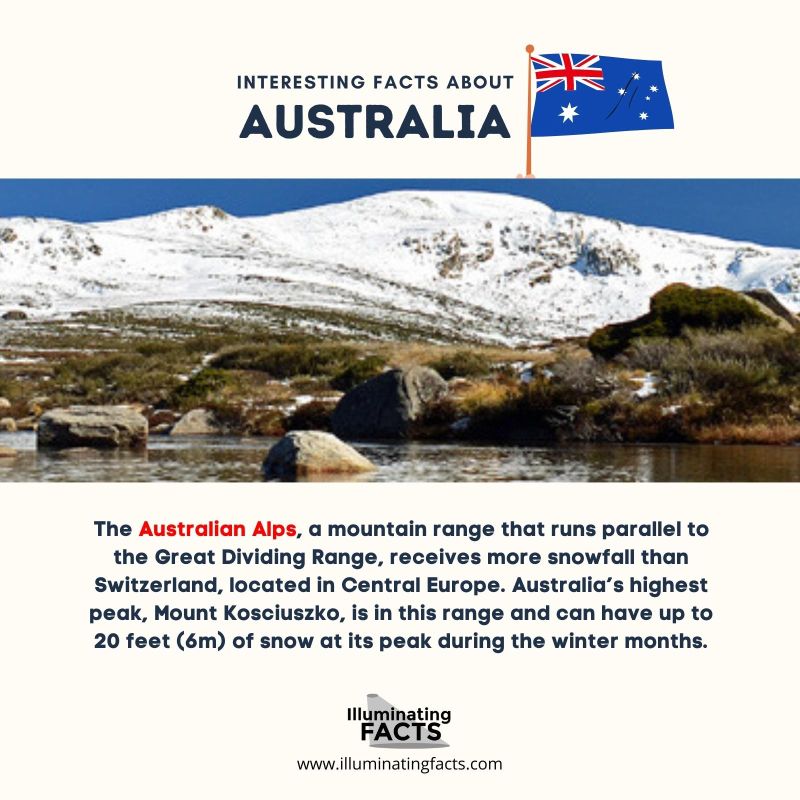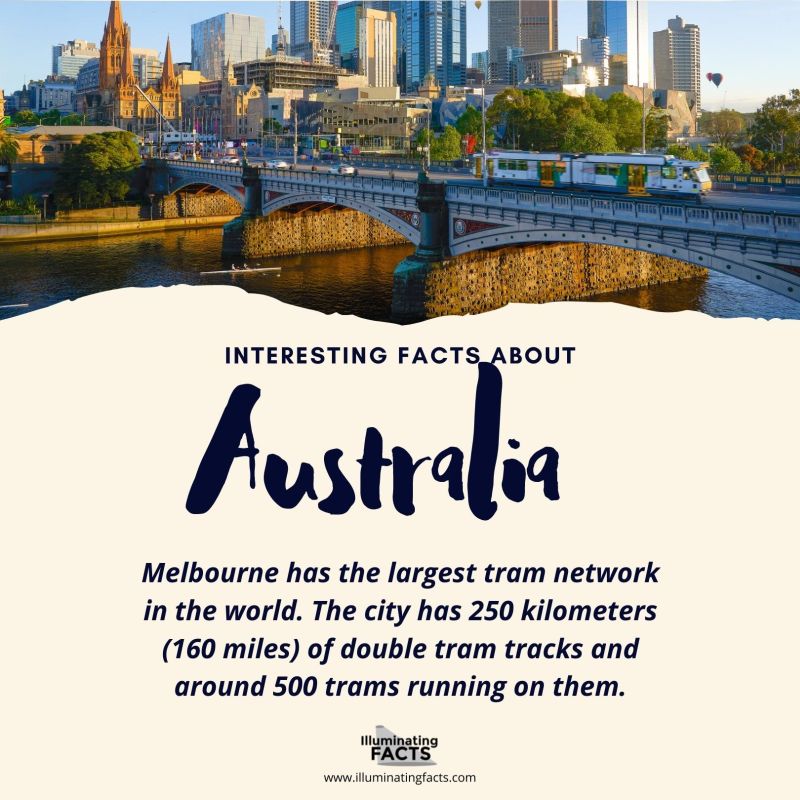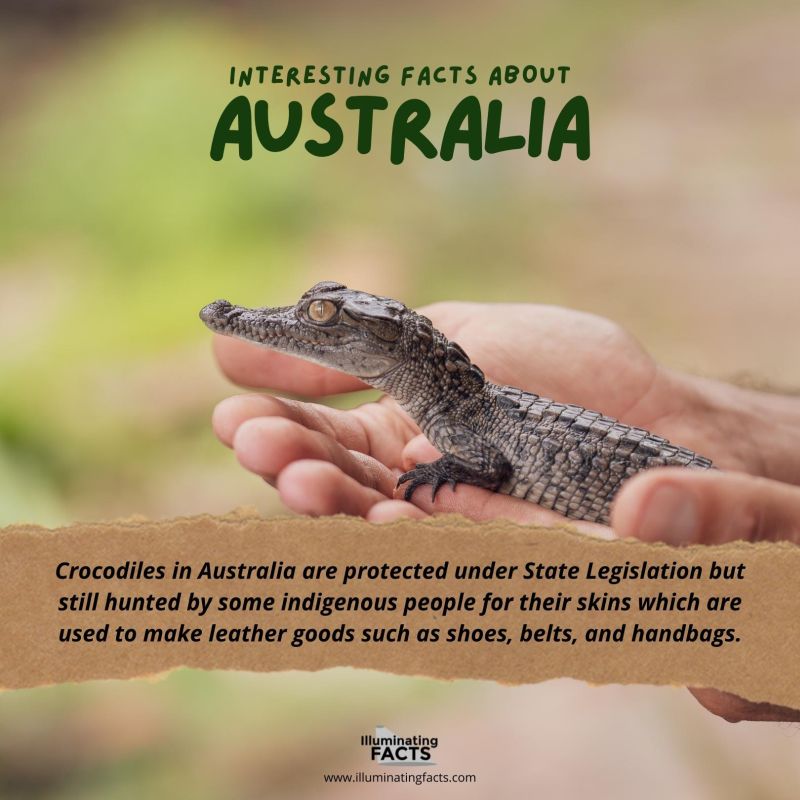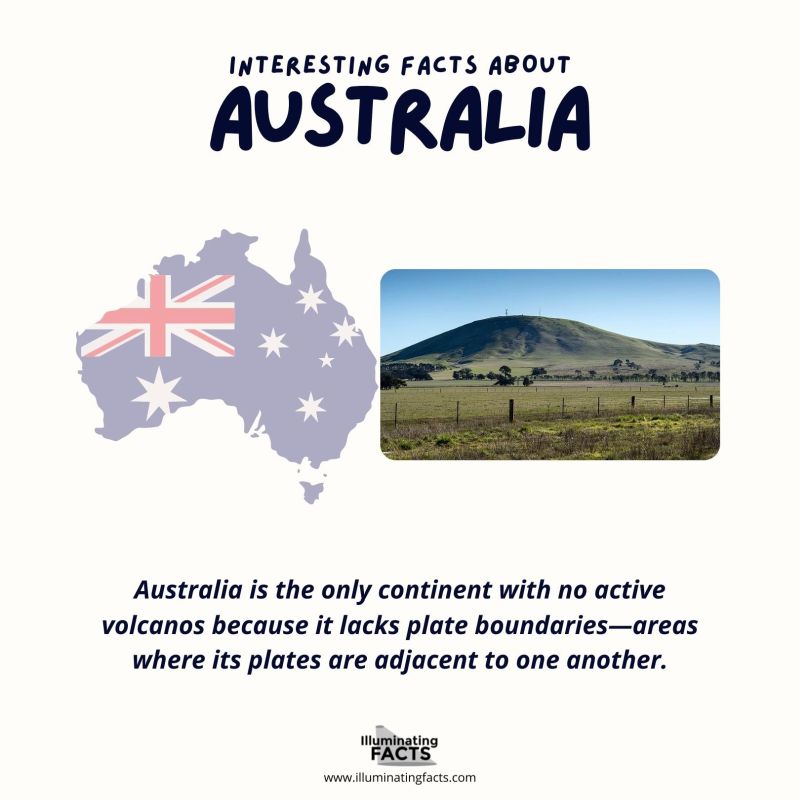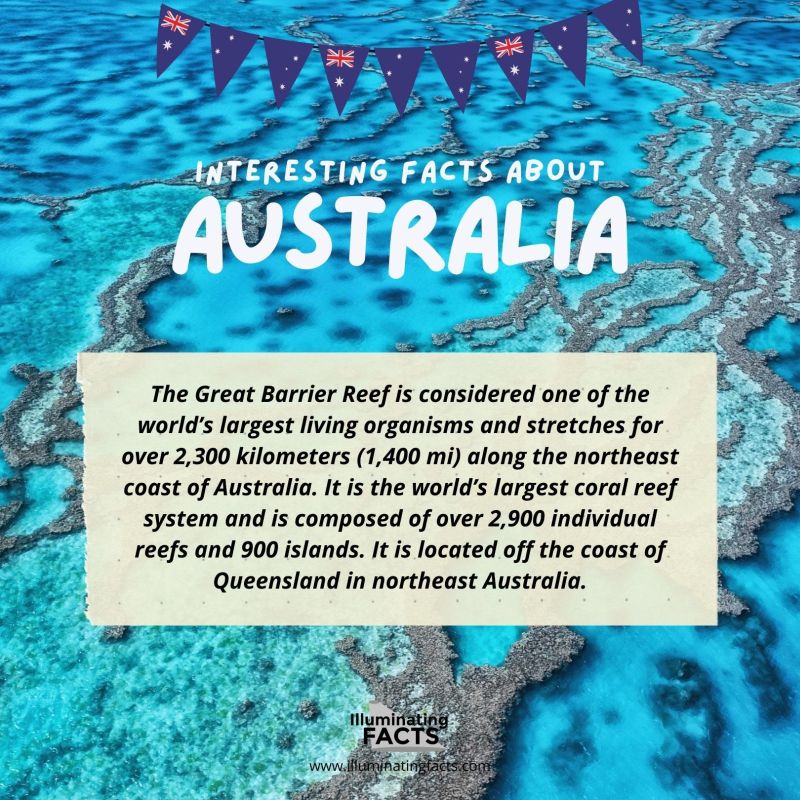Australia is one of the most popular tourist destinations and deserves a dedicated post. This country is special for its rich history, relaxing vibe and nice environment especially in its vast natural parks like Great Barrier Reef and Blue Mountain National Park. Here are some of the most interesting facts about the country which also happens to be a continent.
This post will help you to learn some Interesting facts about Australia. Let’s get started.
1. Australian Alps Receive More Snowfall than Switzerland
When people think of Australia, vast expanses of barren dry land usually come to mind. The Australian Alps, a mountain range that runs parallel to the Great Dividing Range, receives more snowfall than Switzerland, located in Central Europe. Australia’s highest peak, Mount Kosciuszko, is in this range and remains covered in snow the whole winter until spring.
2. Australia is Home to the Longest Golf Course in the World

Australia has the longest 18-hole golf course in the world, which is 1,365 km long and is called Nullarbor Links. The course runs along Kalgoorlie (Western Australia) and Ceduna (South Australia) in South Australia. You can play each hole in a different town, thanks to availability of rental golfing gear at every tee. [1]
3. Longest Fence in the World

The longest fence in the world is made of barbed wire, and it’s not in America. It’s called the ‘Dog Fence’ (or the ‘Dingo Fence’), and it stretches 5,614 km (3,488 miles) across Queensland and South Australia. It’s about the distance between New York and London and was built in the late 1880s to keep dingos away from grazing sheep. [2]
4. Australia is the First Country to Give Women the Right to Vote and Run for Parliament
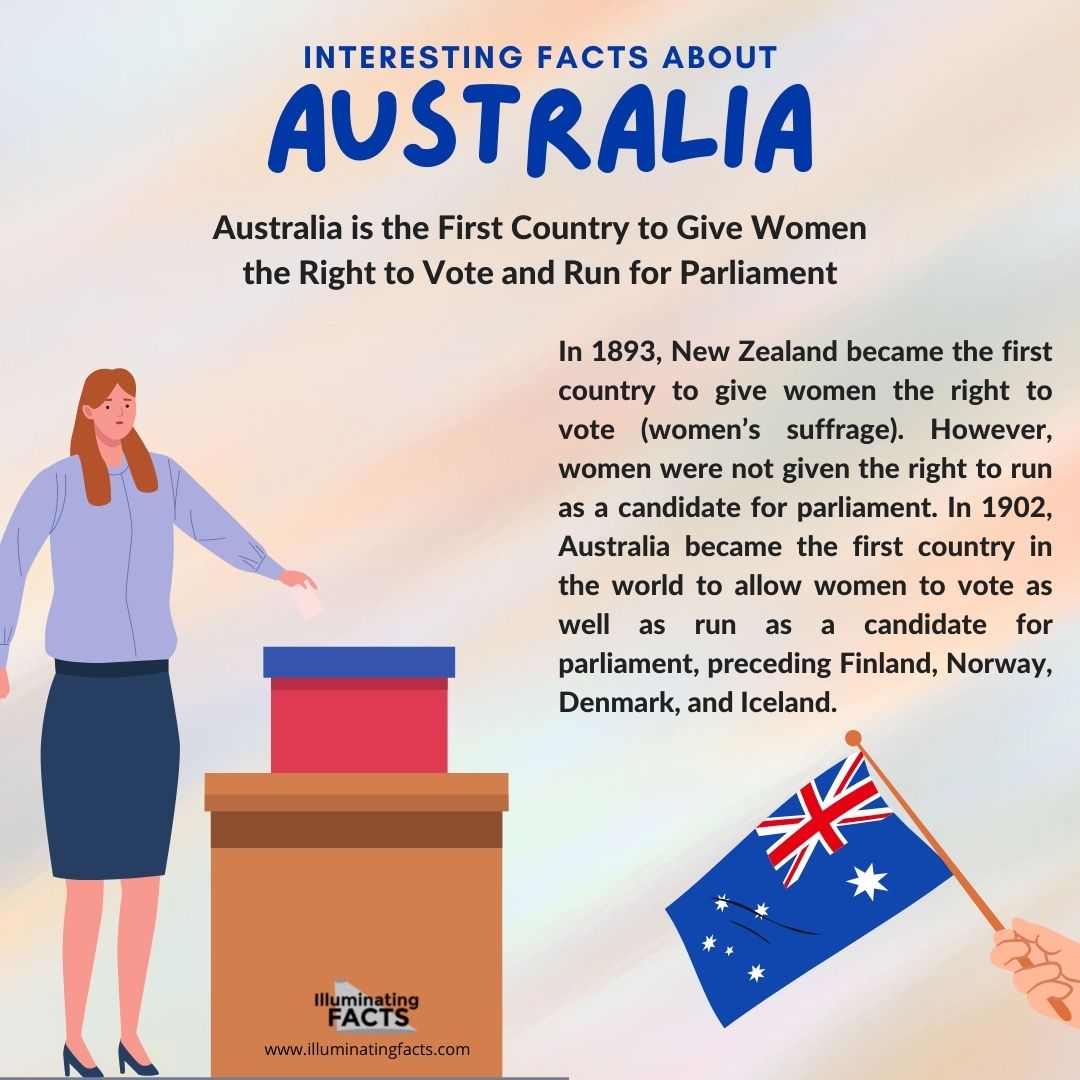
In 1893, New Zealand became the first country to give women the right to vote (women’s suffrage). However, women were not given the right to run as a candidate for parliament. In 1902, Australia became the first country in the world to allow women to vote as well as run as a candidate for parliament, preceding Finland, Norway, Denmark, and Iceland. [3]
5. Canberra’s Selection as the Capital City of Australia Was a Controversial One
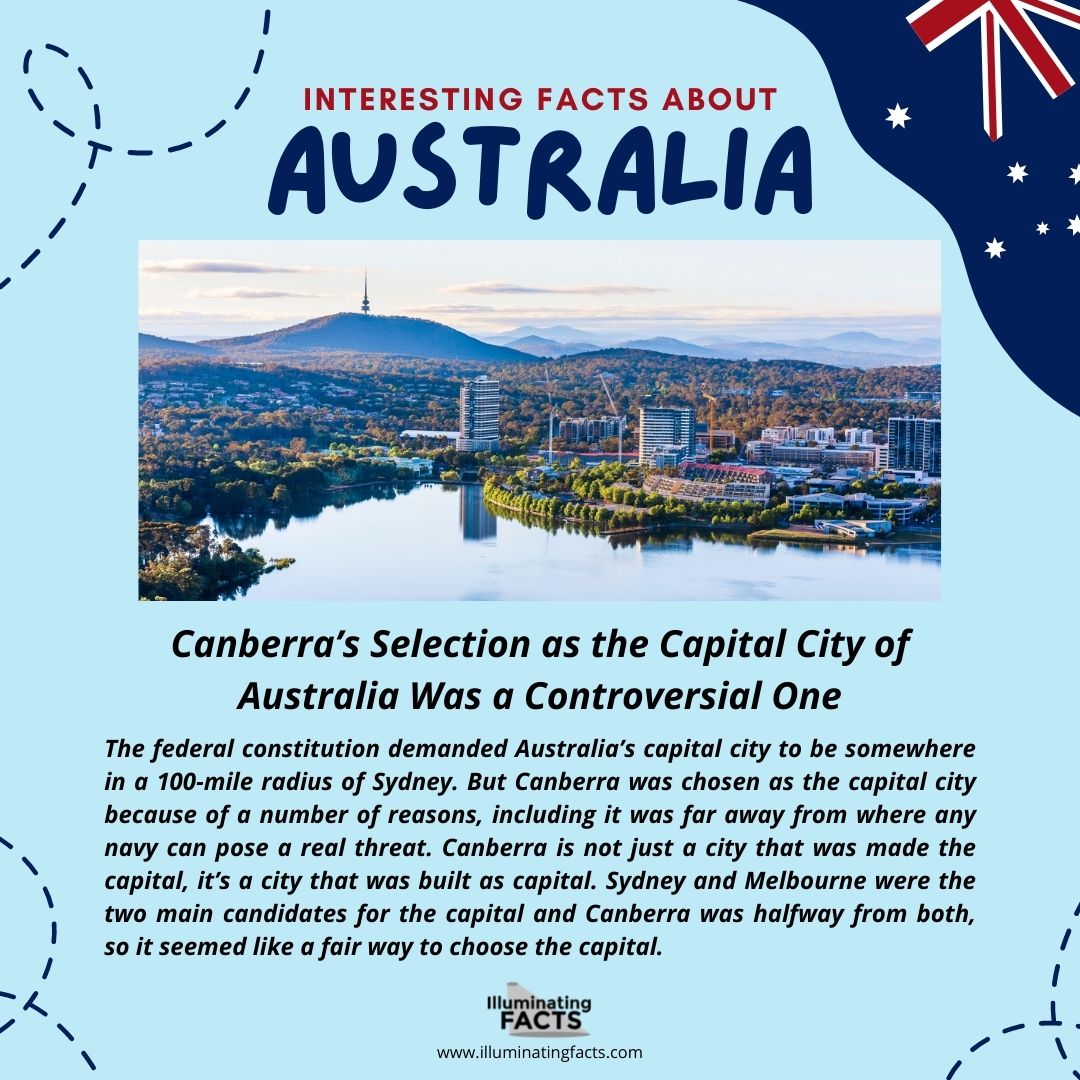
The federal constitution demanded Australia’s capital city to be somewhere in a 100-mile radius of Sydney. But Canberra was chosen as the capital city because of a number of reasons, including it was far away from where any navy can pose a real threat. Canberra is not just a city that was made the capital, it’s a city that was built as capital. Sydney and Melbourne were the two main candidates for the capital and Canberra was halfway from both, so it seemed like a fair way to choose the capital.
6. Melbourne is home to the Largest Tram Network in the World
A tram network refers to tramway tracks on which rail vehicles travel. Introduced in 1885, Melbourne has the largest tram network in the world. The city has 250 kilometers (160 miles) of double tram tracks and around 500 trams running on them on 25 routes with around 1,700 stops.
7. Australia is a Big Country with Over 10,000 Beaches
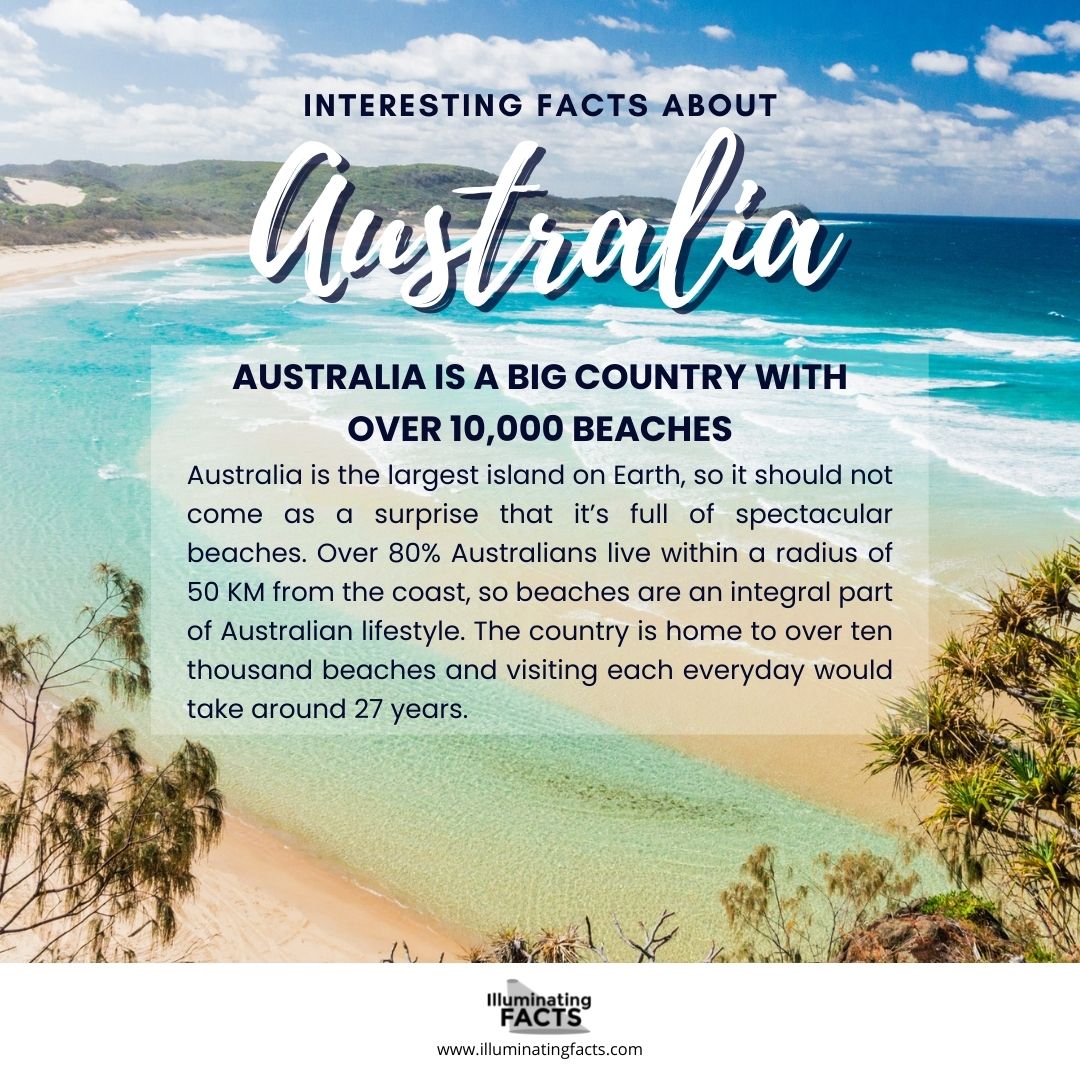
Australia is the largest island on Earth, so it should not come as a surprise that it’s full of spectacular beaches. Over 80% Australians live within a radius of 50 KM from the coast, so beaches are an integral part of Australian lifestyle. The country is home to over ten thousand beaches and visiting each everyday would take around 27 years.
8. Australia is Home to a Lot of Sheep, Three Times as Many as Its Human Citizens
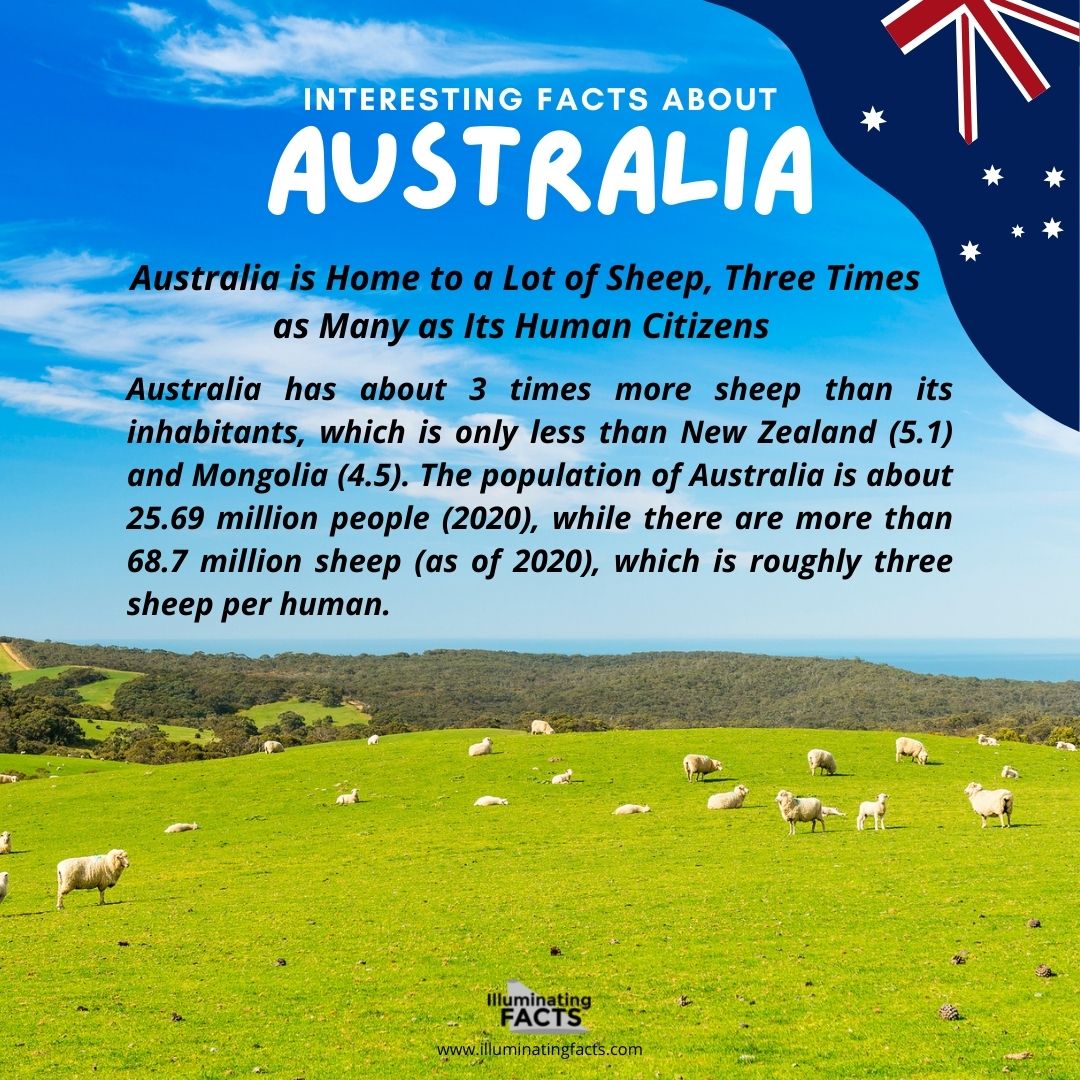
Australia has about 3 times more sheep than its inhabitants, which is only less than New Zealand (5.1) and Mongolia (4.5). The population of Australia is about 25.69 million people(2020), while there are more than 68.7 million sheep (as of 2020), which is roughly three sheep per human.
9. 80% of the Australian Population Lives On the Coast
Although a large country by world standards, Australia has a relatively small population — just over 25 million people. Over 80 percent of Australians live within 50 kilometers of the coast. Australia is among the world’s most urbanized nations. The environment varies from tropical rain forests in northern Queensland to arid deserts in central Australia. [4]
10. Crocodiles in Australia are protected under State Legislation
Crocodiles are well known as dangerous animals and can be found in northern Australia’s rivers, swamps, and lagoons. Both freshwater and saltwater crocodiles are protected under state legislation but are still hunted by some indigenous people for their skins which are used to make leather goods such as shoes, belts, and handbags. [5]
11. The Design Theory of Sydney Opera House
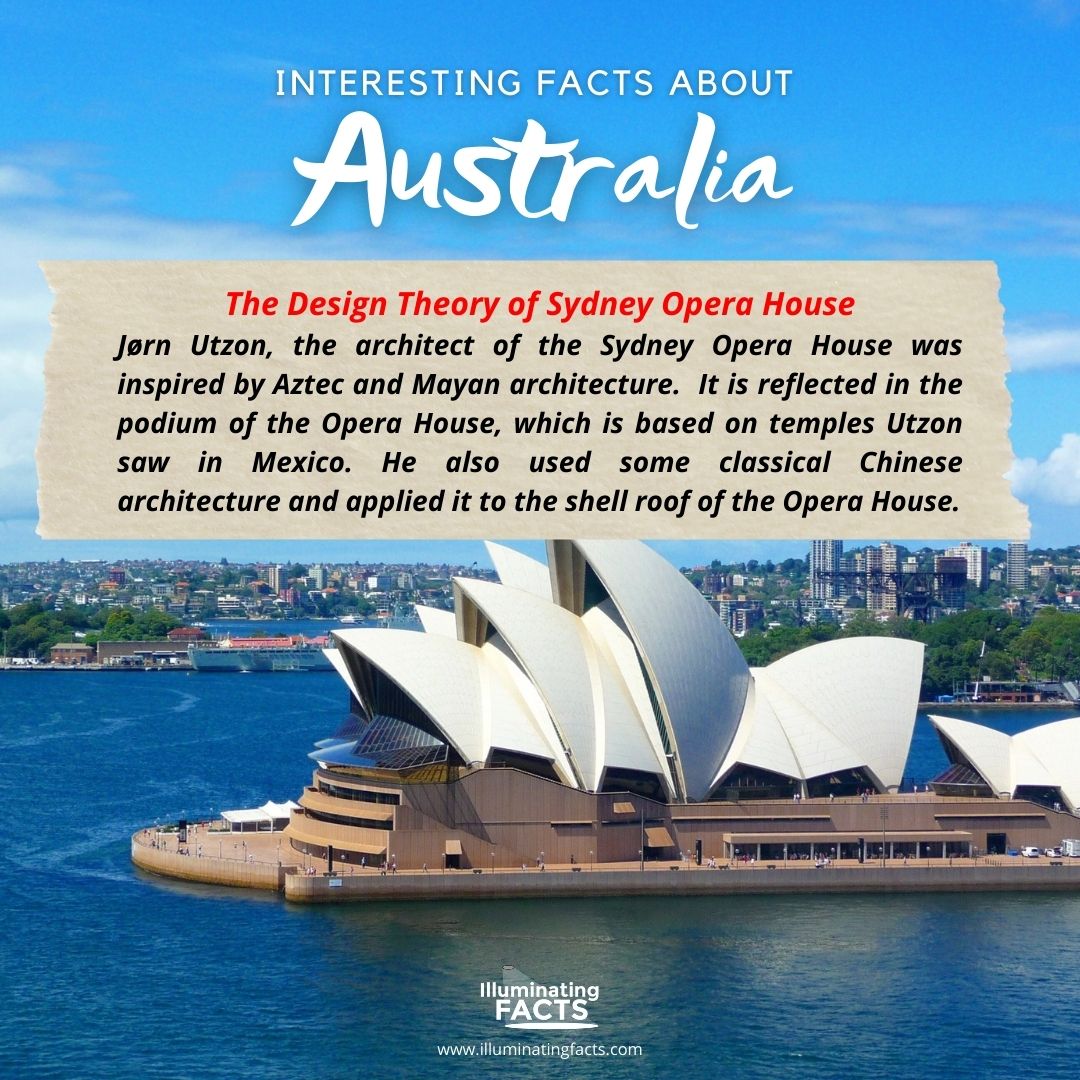
Jørn Utzon, the architect of the Sydney Opera House was inspired by Aztec and Mayan architecture. It is reflected in the podium of the Opera House, which is based on temples Utzon saw in Mexico. He also used some classical Chinese architecture and applied it to the shell roof of the Opera House.
12. Australia is the only Continent That Does Not Have An Active Volcano
Australia is the only continent with no active volcanos because it lacks plate boundaries—areas where its plates are adjacent to one another. However, it is home to Tweet Volcano, which is one of the largest extinct volcanoes in the whole world.
13. Besides Athens, Melbourne in Victoria Has the Largest Greek Population in the World
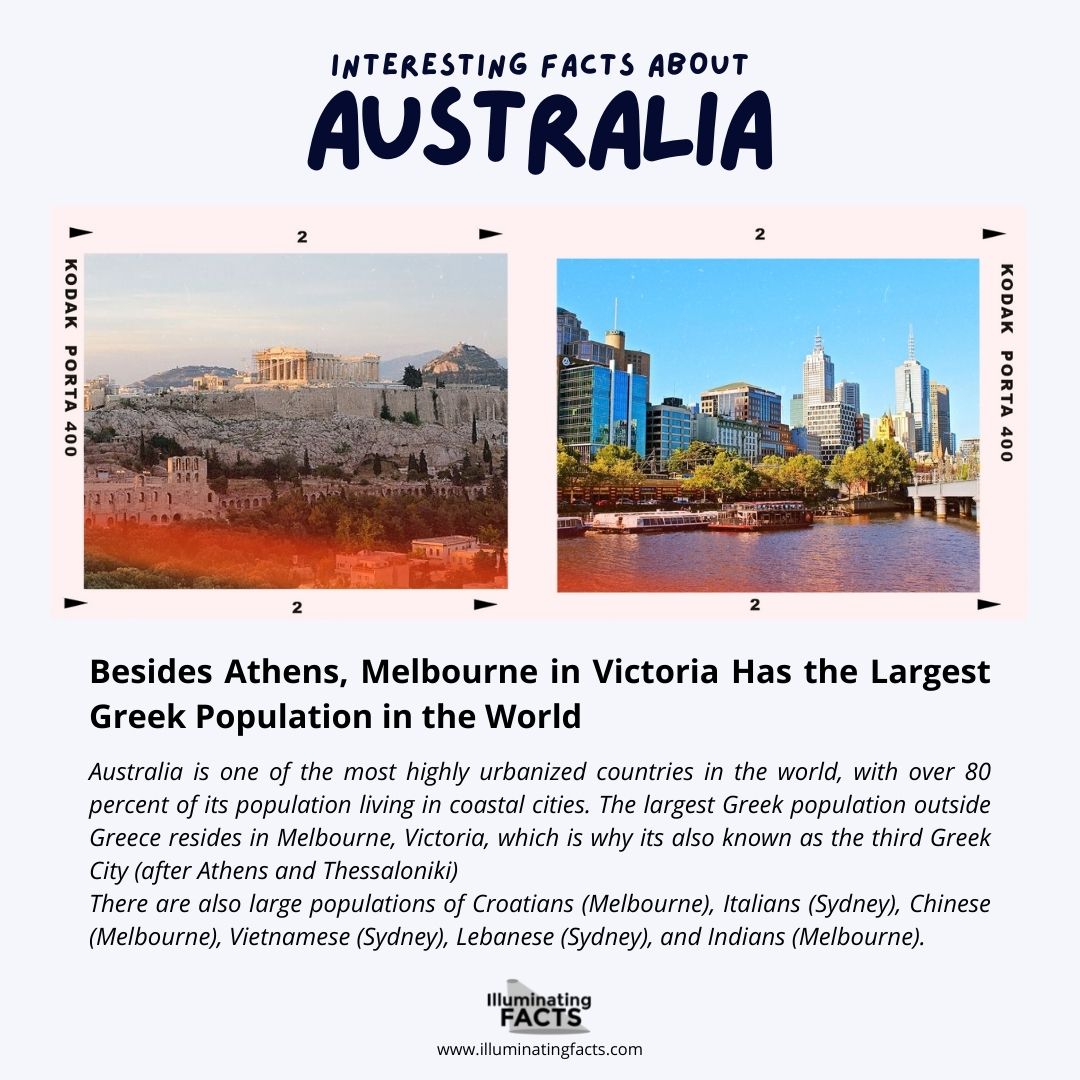
Australia is one of the most highly urbanized countries in the world, with over 80 percent of its population living in coastal cities. The largest Greek population outside Greece resides in Melbourne, Victoria, which is why its also known as the third Greek City (after Athens and Thessaloniki)
There are also large populations of Croatians (Melbourne), Italians (Sydney), Chinese (Melbourne), Vietnamese (Sydney), Lebanese (Sydney), and Indians (Melbourne).
14. The Great Barrier Reef is Considered One of the World’s Largest Living Organisms
The Great Barrier Reef, stretching for over 2,300 kilometers (1,400 mi) along the northeast coast of Australia, is the world’s largest coral reef system and is composed of over 2,900 individual reefs and 900 islands. It is located off the northeastern coast in Australia.
Although this reef structure is composed of and built by billions of tiny organisms known as coral polyps, it can be seen from outer space. The Great Barrier Reef was selected as a World Heritage Site in 1981 by the United Nations and was also labeled one of the world’s seven natural wonders.
15. Australia’s Rainforests Are among the Oldest on Earth
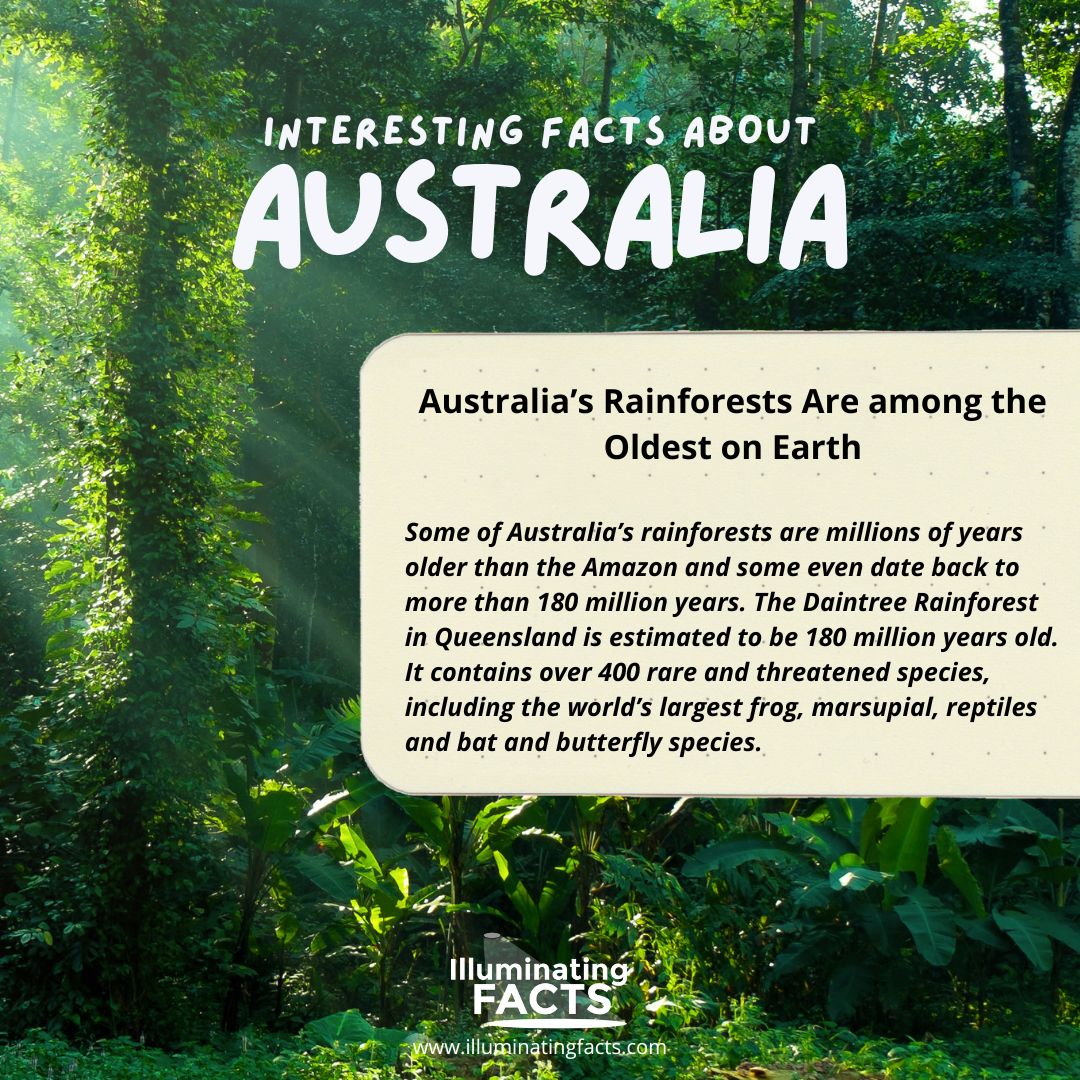
Some of Australia’s rainforests are millions of years older than the Amazon and some even date back to more than 180 million years. The Daintree Rainforest in Queensland is estimated to be 180 million years old. It contains over 400 rare and threatened species, including the world’s largest frog, marsupial, reptiles and bat and butterfly species. [6]
16. Australia is home to 10% of the World’s Plant Species
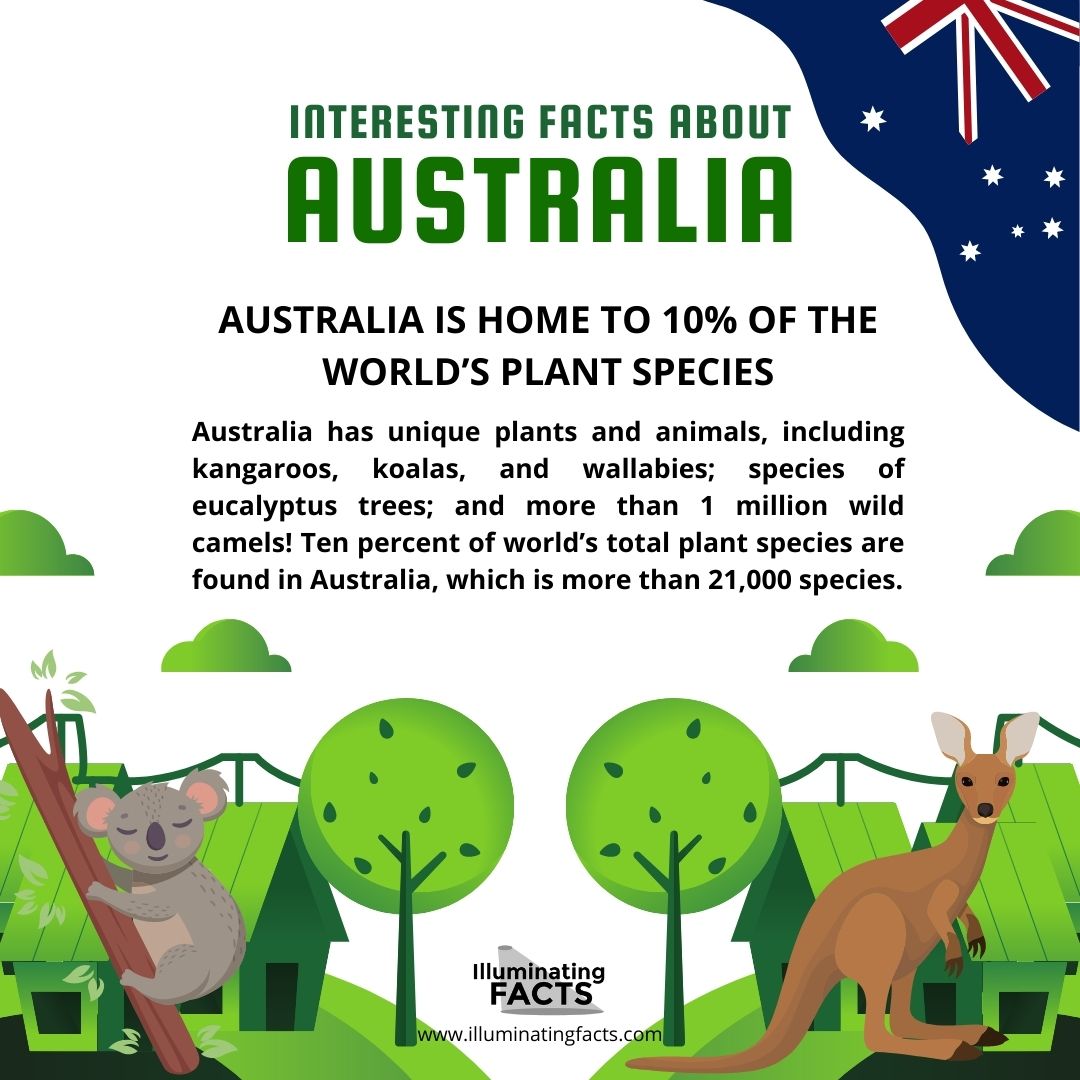
Australia has unique plants and animals, including kangaroos, koalas, and wallabies; species of eucalyptus trees; and more than 1 million wild camels! Ten percent of world’s total plant species are found in Australia, which is more than 21,000 species.
17. Home to World’s Largest Monolith

Uluru (Ayers Rock) is the world’s largest single-rock monolith. It is taller than the Eiffel Tower and stands 1,142 feet (348m) high and measures 2.2 miles (3.5 km) across, having a 5.8-miles circumference (9.33 KM).
18. 300 Different Languages Are Spoken in Australia today

Today, more than 300 languages are spoken in Australia, including Indigenous languages. English is the most common language used in Australia, with over 85% of Australians speaking only English at home. [7]
19. Mount Kosciuszko is Country’s Tallest Peak

At 7,310 feet (2,228 meters), Mount Kosciuszko on Australia’s mainland is country’s tallest peak. If you count its external territories of Heard Island and McDonald Islands, and Australian Antarctic Territory, the tallest peak becomes Mawson Peak on Heard Island at 9,006 feet. However, the Mawson Peak is considered to be in sub-Antarctica, so Mount Kosciuszko remains the tallest in mainland Australia.
20. The Australian Flag
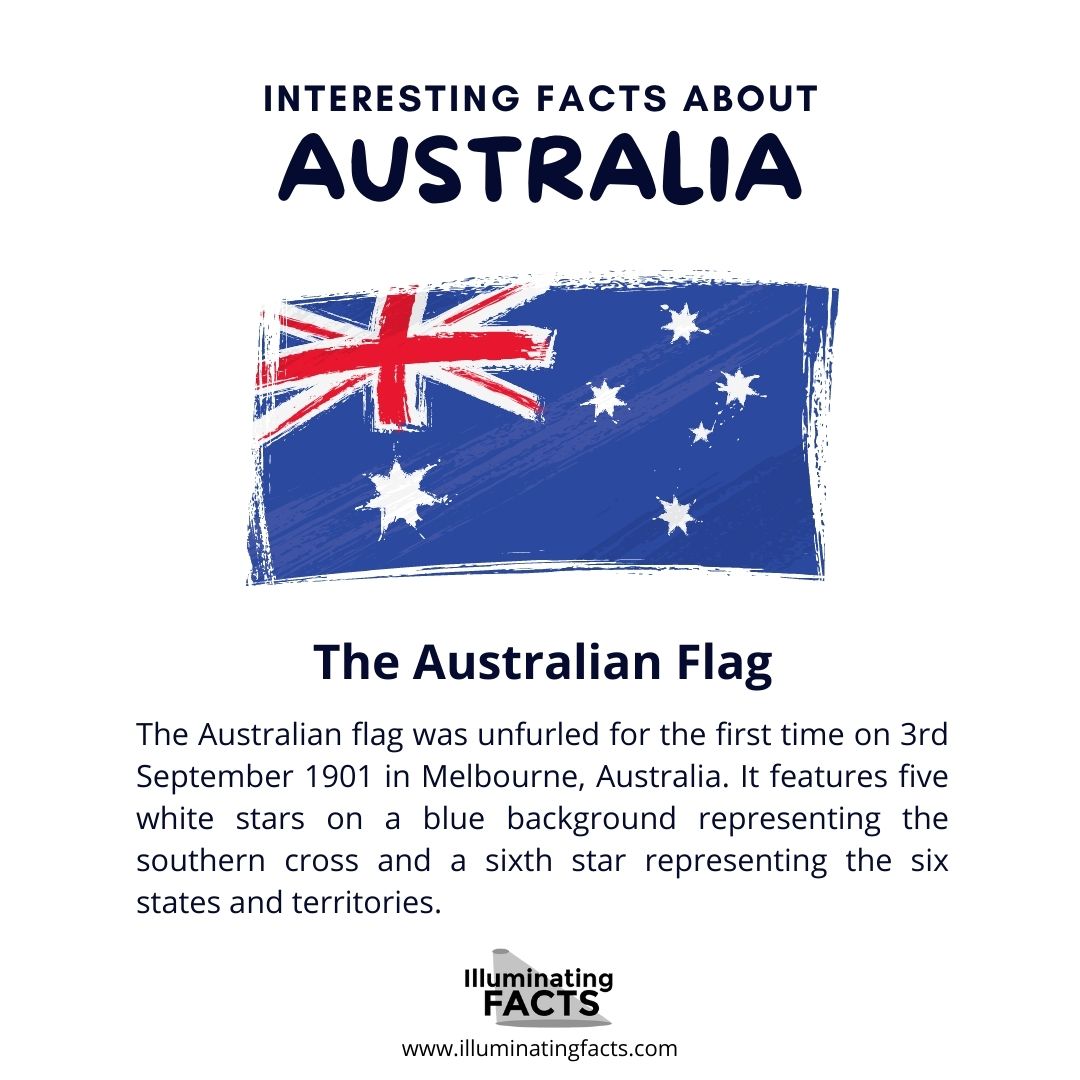
The Australian flag was unfurled for the first time on 3rd September 1901 in Melbourne, Australia. It features five white stars on a blue background representing the southern cross and a sixth star representing the six states and territories. [8]
Conclusion
As you can see, Australia is a beautiful and fascinating country that has plenty of intriguing facts to share. It’s a place where people can go on vacation and enjoy themselves immensely, or they could even make it their new home. A lot of people are afraid to move abroad at first, but they’re usually glad they did once they take the plunge.
References
- Nullarbor links golf course. (n.d.). Australia’s Golden Outback | Explore Epic Outback Road Trips in WA. https://www.australiasgoldenoutback.com/page/nullarbor-links-golf-course
- Thomas Newsome. (2015, February 16). Let’s move the world’s longest fence to settle the dingo debate. The Conversation. https://theconversation.com/lets-move-the-worlds-longest-fence-to-settle-the-dingo-debate-37155
- Women’s suffrage. (n.d.). National Library of Australia. https://www.nla.gov.au/digital-classroom/senior-secondary/shoulder-shoulder-feminism-australia/womens-suffrage
- Geoscience Australia: AusGeo news 101 – Future directions for mapping in geoscience Australia. (n.d.). Geoscience Australia. https://www.ga.gov.au/ausgeonews/ausgeonews201103/climate.jsp
- Living with crocodiles. (n.d.). Parks and Wildlife Service. https://www.dpaw.wa.gov.au/129
- 10 mind-blowing Daintree Rainforest facts. (n.d.). Cape Tribulation Tours & Daintree Tours – Jungle Tours. https://jungletours.com.au/10-daintree-rainforest-facts/
- Language spoken at home | Australia | Community profile. (n.d.). profile.id. https://profile.id.com.au/australia/language?WebID=245
- Flag of Australia. (n.d.). McGill School Of Computer Science. https://www.cs.mcgill.ca/~rwest/wikispeedia/wpcd/wp/f/Flag_of_Australia.htm


